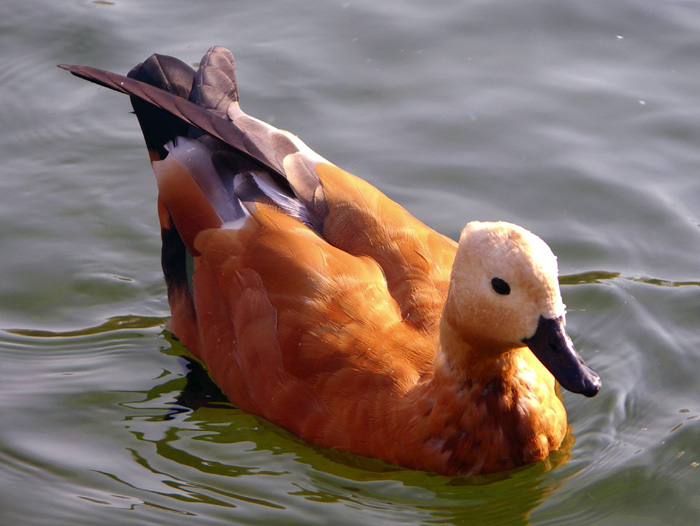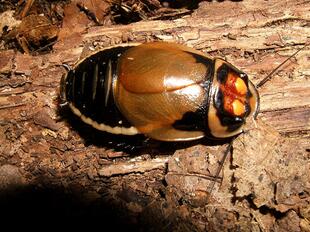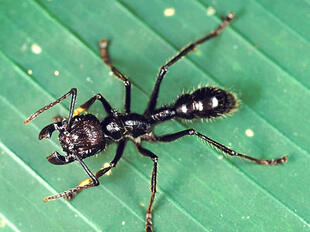
Ruddy shelduck(Tadorna ferruginea)
Phylum —chordata
Class — aves
Order — anseriformes
Family — anatidae
Genus –tadorna
Appearance
The ruddy shelduck grows to a length of 58 to 70 cm (23 to 28 in) and has a 110–135 cm (43–53 in) wingspan.
The male has orange-brown body plumage and a paler, orange-brown head and neck, separated from the body by a narrow black collar. The rump, flight feathers, tail-coverts and tail feathers are black and there are iridescent green speculum feathers on the inner surfaces of the wings. Both upper and lower wing-coverts are white, this feature being particularly noticeable in flight but hardly visible when the bird is at rest. The bill is black and the legs are dark grey. The female is similar but has a rather pale, whitish head and neck and lacks the black collar, and in both sexes, the coloring is variable and fades as the feathers age. The birds moult at the end of the breeding season and the male loses the black collar, but a further partial moult between December and April restores it. Juveniles are similar to the female but are a darker shade of brown.
Habitat
It is a migratory bird, wintering in the Indian subcontinent and breeding in southeastern Europe and central Asia, though there are small resident populations in North Africa.
Behavior
The ruddy shelduck is a mainly nocturnal bird.
The ruddy shelduck is usually found in pairs or small groups and rarely forms large flocks. However, moulting and wintering gatherings on chosen lakes or slow rivers can be very large.
Diet
It is omnivorous and feeds on grasses, the young shoots of plants, grain and water plants as well as both aquatic and terrestrial invertebrates. On land it grazes on the foliage, in the water it dabbles in the shallows, and at greater depths, it up-ends, but it does not dive.
Reproduction
The birds arrive at their main breeding locations in central Asia in March and April. There is a strong pair bond between the male and female and it is thought they pair for life. In their breeding quarters, the birds are very aggressive towards their own kind and towards other species. Mating takes place on the water after a brief courtship ritual involving neck stretching, head dipping and tail raising. The nesting site is often far away from water in a hole in a tree or ruined building, a crevice in a cliff, among sand-dunes or in an animal burrow. The nest is constructed by the female using feathers and down and some grasses.
A clutch of about eight eggs (range six to twelve) is laid between late April and early June. Incubation is done by the female while the male stands in attendance nearby. The eggs hatch after about twenty-eight days and both parents care for the young, which fledge in a further fifty-five days.
After breeding the adults moult, losing the power of flight for about a month while they do so. Before moulting they move to large water bodies where they can more easily avoid predation while they are flightless. The family may stay together as a group for some time; the autumn migration starts around September and the young may mature in their second year.
Incaptivity
Lifespan -up to 20 years.
Shelducks perfectly adapt to life in aviaries, grow well and regularly give healthy offspring, which are selflessly taken care of by both parents. The main difficulty faced by beginners in breeding of these birds is their excessive aggressiveness during the breeding season, intolerance of the presence of birds of any kind in the breeding territory. A male guarding a clutch of a female or brood can pounce on both a large bird of prey and a predatory mammal and a human.
At the same time, a couple with their own brood often takes other birds` chicks under their protection, and sometimes even takes them away from their parents. Young birds under 2 years of age who have not reached sexual maturity are more tolerant to life in a large flock. Adult birds get along peacefully with other representatives of waterfowl during the molting period at the end of the nesting period. But, in addition to seasonally aggressiveness when the male defending its territory can kill smaller ducks and even geese, we need to understand that bird keeping in mixed flocks can be the reason for hybridization with any of the members of the genus Tadorna, as well as geese, breasted geese and domestic ducks.
Large aviaries as a place for seasonal keeping of a small group of adult immature or molting birds should be much more spacious than for any other waterfowl. The minimum size of the enclosure for a pair of shelducks cannot be less than 100 square meters. For good growth, regular reproduction and preservation of the brood population, it is necessary to provide the shelducks with the opportunity to graze on a large area with low grass. It is recommended to equip a large, shallow pond.
During the long frosty period, ducks need dry enclosed spaces.
In captivity, it is important for shelducks to have a possibility of grazing on grass. The natural herbal diet is supplemented with special compound feeds and bread. In winter, the grain diet consists of wheat, oats, lentils, peas, crushed corn is supplemented with finely chopped peelings of vegetables such as potatoes, carrots, cabbage and others.
Hatched ducklings are fed with industrial starter feed. Duckweed, a lot of chopped greens − lettuce and spinach, insects and earthworms are useful for the growth of chicks. Providing access to low-grass pasture from an early age guarantees the brood rapid growth and maximum survival. A shallow container with clean drinking water, which is replaced as it becomes contaminated, but at least once or twice a day, should always be in the place of feeding the bird.
 Russian
Russian
 English
English
























